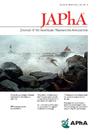在沙特阿拉伯的门诊护理设置专业药房的实施:患者的经验和操作结果。
IF 2.5
4区 医学
Q3 PHARMACOLOGY & PHARMACY
Journal of the American Pharmacists Association
Pub Date : 2025-01-01
DOI:10.1016/j.japh.2024.102302
引用次数: 0
摘要
背景:专业药房需要独特的以患者为中心的护理,强调高成本药物、复杂的治疗方案和需要特殊处理的药物。目的:我们进行了这项研究,以评估专业药房对患者和医疗保健提供者(HCP)满意度和药学实践相关结果的影响。方法:这项前瞻性、同步、历史对照的队列研究在门诊环境中进行了6个多月,包括6个专业:神经病学、儿科、皮肤病学、胃肠病学、儿童肝移植和医学遗传学。药房的工作流程被重新设计,以服务于专业咨询和配药窗口的目标。在研究期间访问选定诊所的患者被纳入研究范围。主要终点是通过有效的满意度调查获得的患者和HCP满意度的加权分数。次要终点包括药房操作相关的结果,如等待时间、药剂师干预和患者对专业药物的依从性。结果:在3827名参与研究的患者中,有3620名(94.5%)被招募。在接触的175名医护人员中,161人被招募。干预后患者满意度由4.27分提高到4.69分(P < 0.05)。虽然药剂师的满意度没有显著变化,但其他医疗保健提供者的满意度有显著提高(3.7-4;P = 0.008)。平均等待时间由25 min缩短至12 min (P < 0.05)。记录在案的药剂师干预数量为每100名患者3名。根据覆盖天数,患者依从性从73.6%提高到85.6% (P = 0.03)。结论:专科药房的实施提高了患者和医疗服务提供者的整体满意度,提高了工作效率,减少了药房等待时间和患者对专科药物的依从性。本文章由计算机程序翻译,如有差异,请以英文原文为准。
Implementation of a specialty pharmacy in an ambulatory care setting in Saudi Arabia: Patient experience and operational outcomes
Background
Specialty pharmacy practice requires unique patient-centric care, emphasizing high-cost medications, complex treatment regimens, and medications requiring special handling.
Objective
We conducted this study to assess the effect of specialty pharmacy practice on patient and healthcare provider (HCP) satisfaction and pharmacy practice–related outcomes.
Methods
This prospective, concurrent, and historically controlled cohort study was performed in an ambulatory care setting for over 6 months and included 6 specialties: neurology, pediatrics, dermatology, gastroenterology, pediatric liver transplantation, and medical genetics. The workflow of the pharmacy was redesigned to serve the objective of specialized counseling and dispensing windows. Patients who visited selected clinics during the study period were included. The primary endpoint was the weighted scores for patient and HCP satisfaction obtained via a validated satisfaction survey. The secondary endpoints included pharmacy operation-related outcomes, such as patient's waiting time, pharmacist intervention, and patient adherence to specialty medications.
Results
Of the 3827 patients approached for study participation, 3620 were recruited (94.5%). Of the 175 HCPs approached, 161 were recruited. Patient satisfaction scores improved from 4.27 to 4.69 after intervention (P < 0.05). Although there was no significant change in pharmacists’ satisfaction, a significant improvement in other HCP satisfaction was observed (3.7–4; P = 0.008). The average wait time was reduced from 25 to 12 min (P < 0.05). The number of documented pharmacist interventions was 3 per 100 patients. Patient adherence improved from 73.6% to 85.6% based on the number of days covered (P = 0.03).
Conclusion
Implementing specialty pharmacies improved the overall satisfaction of patients and health care providers and enhanced work efficiency, as demonstrated by reduced pharmacy waiting time and patient adherence to specialty medications.
求助全文
通过发布文献求助,成功后即可免费获取论文全文。
去求助
来源期刊
CiteScore
3.30
自引率
14.30%
发文量
336
审稿时长
46 days
期刊介绍:
The Journal of the American Pharmacists Association is the official peer-reviewed journal of the American Pharmacists Association (APhA), providing information on pharmaceutical care, drug therapy, diseases and other health issues, trends in pharmacy practice and therapeutics, informed opinion, and original research. JAPhA publishes original research, reviews, experiences, and opinion articles that link science to contemporary pharmacy practice to improve patient care.

 求助内容:
求助内容: 应助结果提醒方式:
应助结果提醒方式:


